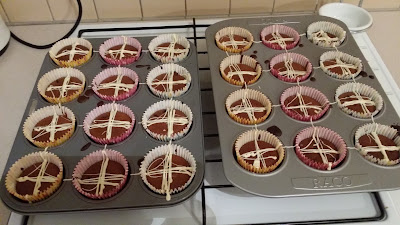Growing up, pasta was my absolute favourite food –
especially Spaghetti Bolognese. Even today, a bowl of pasta is my go-to comfort
food, and the one thing I am very comfortable with cooking.
That’s why when I learned that I was fructose intolerant and
wheat was one of the worst culprits, I was initially very much at a loss. On
the one hand it forced me to step outside my comfort zone and try cooking other
types of food, but I still missed having a bowl of Bolognese for dinner every
now and then!
The first type of pasta that I tried was one made with corn,
but I quickly got a very bad stomach ache and reflux after only a couple of
mouthfuls, so that was clearly not the way to go! Over the last few years
however, I have tried many different types of gluten free and other low wheat
options, and settled on a few that seem to work better for me.
So, here are my recommendations for different types of pasta
that are more fructose friendly:
- San Remo Gluten Free pasta: I have mentioned this one in previous posts, but I can’t get enough of the San Remo Gluten Free pasta range – it really is amazing, and very similar to regular wheat pasta in taste and colour. This pasta also holds its texture reasonably well when cooked. The San Remo Gluten Free pasta range is made with maize starch so it’s not entirely fructose friendly, but it is still a good option. The only negative points I have about this range is that there are less styles of pasta available compared to San Remo’s wheat pasta range, and they only come in 250g boxes.
- Latina Fresh Gluten Free Beef Ravioli: Ravioli was particular favourite of mine growing up, so I was very excited when Latina Fresh came up with a Gluten Free range! The ravioli can get quite soft when cooked, but it still tastes good. Just be careful to limit your portions though, as there is a small amount of onion in the filling. The packets are quite large, but the uncooked ravioli freezes well, so I always keep the leftovers in the freezer for another day.
- Latina Fresh Gluten Free Lasagne Sheets: Just as I was excited by the Latina Fresh Gluten Free Beef Ravioli, I was also very relieved when they released fresh gluten free lasagne sheets. After struggling with dry gluten free lasagne sheets for months (which sadly includes San Remo’s version), I found that the Latina Fresh Gluten Free Lasagne Sheets were so easy to use – cooks perfectly, and tastes almost like the wheat version! These gluten free lasagne sheets also freeze well when cooked.
- Guzzi’s Golden Pasta Gnocchi: This is a good low wheat option if you want something different, as the gnocchi is made with 81% potato flour. The Guzzi’s Golden Pasta Gnocchi range is also made fresh, and cooks very well. Again, be careful with your portion size, as this gnocchi is made with wheat flour. These also freeze well when uncooked.









